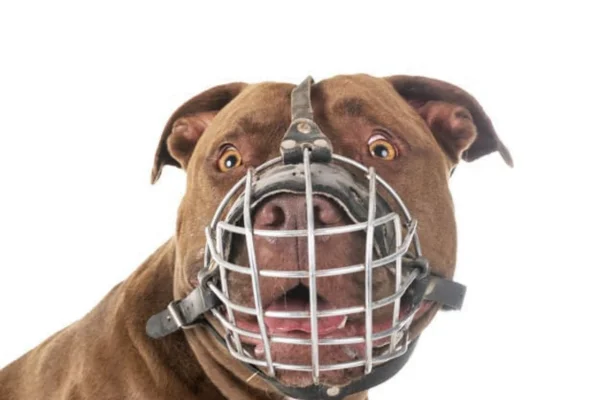Unraveling Canine Influenza: Symptoms, Diagnosis, Treatment and Prevention
Canine influenza, also known as canine infectious tracheobronchitis or kennel cough, is a contagious respiratory disease that affects dogs of all ages, breeds and sizes. In this comprehensive article, we'll explore canine influenza in detail, from its symptoms to its treatment options and preventative measures.
1. What is Canine Influenza?
Canine influenza is a respiratory infection caused by different pathogens, including viruses and bacteria. The main causes of canine flu are the canine parainfluenza virus and the bacterium Bordetella bronchiseptica. These pathogens are highly contagious and can be transmitted easily from dog to dog, especially in environments where animals are in close contact, such as shelters, kennels or dog parks.
2. Symptoms of Dog Flu
Symptoms of dog flu can vary from mild to severe and include:
- Dry, persistent cough, which may be accompanied by clear or greenish nasal discharge.
- Mild to moderate fever.
- Lethargy and lack of appetite.
- Frequent sneezing.
- Difficulty breathing in more severe cases.
- Runny nose and eye inflammation in some cases.
Symptoms usually develop within a few days of exposure to the virus or bacteria and can persist for several weeks, even with proper treatment.
Contents
3. Diagnosis of Canine Influenza
The diagnosis of canine influenza is based on the clinical symptoms presented by the dog, as well as laboratory tests to detect the presence of specific pathogens. This may include:
- Detailed physical examination by the veterinarian to assess the symptoms and severity of the disease.
- PCR (Polymerase Chain Reaction) tests to detect viral or bacterial genetic material in dog respiratory samples.
- Nasal swab culture to identify the presence of bacteria such as Bordetella bronchiseptica.
4. Treating Dog Flu
Flu treatment is usually symptomatic and can include:
- Adequate rest: Isolate the infected dog from other animals to prevent the spread of the disease and allow it to rest properly.
- Hydration: Make sure the infected dog has access to plenty of fresh water to prevent dehydration.
- Medicines to relieve symptoms: Cough, fever and other symptoms can be treated with medicines prescribed by the vet.
- Antibiotics: In cases of secondary bacterial infection, such as bacterial bronchitis, the vet may prescribe specific antibiotics.
In severe cases, where there are significant respiratory complications, hospitalization and respiratory support may be necessary.
5. Canine Influenza Prevention
Flu prevention is essential to reduce the risk of infection in dogs. Some preventative measures include:
- Vaccination: Vaccines against the canine parainfluenza virus and the bacterium Bordetella bronchiseptica are available and highly recommended, especially for dogs that frequent areas where there is close contact with other animals, such as dog parks, daycare centers or dog shows.
- Hygiene and cleanliness: Keeping the areas where dogs live and play clean and disinfected can help reduce the risk of contamination by viruses and bacteria.
- Isolation: Isolating infected or sick dogs from other animals can help prevent the spread of the disease.
6. Importance of Veterinary Consultation
It's important to note that any dog showing symptoms of dog flu should be taken to the vet for assessment and appropriate treatment. The vet will be able to make the correct diagnosis of the disease and prescribe the most appropriate treatment for your pet's specific case.
7. Differences between Dog Flu and Human Flu
Although canine flu and human flu have some similarities in their symptoms, it is important to highlight their differences:
- Transmission: Canine flu is transmitted mainly between dogs, while human flu is transmitted from person to person.
- Pathogens: Canine flu is mainly caused by the canine parainfluenza virus and the bacterium Bordetella bronchiseptica, while human flu is caused by influenza A, B and C viruses.
- Vaccination: There are vaccines available to prevent canine flu, while vaccination against human flu is recommended annually, especially for at-risk groups.
- Treatment: Treatment for canine flu usually involves rest, hydration and, in some cases, antibiotics for secondary bacterial infections. Treatment for human flu can include antiviral drugs, rest and hydration.
8. Economic and Social Impact of Influenza
In addition to the impact on dogs' health, influenza can also have significant economic and social consequences. The disease can lead to high veterinary costs, especially in severe cases that require hospitalization and intensive treatment. In addition, the spread of canine influenza in shelters, kennels or dog daycare centers can result in disruptions to operations and logistical challenges for those responsible for caring for the animals.
Conclusion
It is a contagious respiratory disease that can affect dogs of all ages and breeds. Early identification of symptoms, accurate diagnosis and appropriate treatment are key to ensuring a speedy recovery and avoiding complications. In addition, preventive measures such as vaccination and proper hygiene are essential to reduce the risk of infection in healthy dogs.
With proper care and awareness of the risks of canine flu, we can protect the health and well-being of our four-legged friends.










